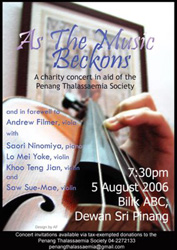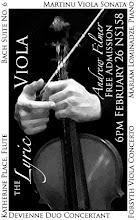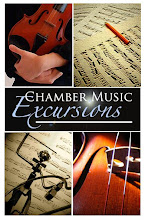Dear Readers,
As I leave Thailand and Southeast Asia after teaching here for the past five years, pen and paper invite me to share some of the memories this dynamic region have left me.
What comes first to mind is the annual Southeast Asian Youth Orchestra in Bangkok, where young people of various cultures and languages meet in music. After a gruelling day packed with facilitating rehearsals and workshops, I pressed the down button of the elevator. It seemed that the hotel staff had picked that very moment to start upping the volume of the in-house music – but when the doors opened, I realized that it was in actuality two enthusiastic violin students who decided to squeeze all the remaining time to practice – including the time spent in the elevator! That’s certainly bringing elevator music to a new level.
Another highlight of the local string world is the Chulalongkorn University Viola Ensemble. A 26-member ensemble of the best violists in the country, together with harp, double bass and the occasional drum kit, the ensemble performs a balanced repertoire of classical and Thai traditional music. What makes Asians special, asserts founder and conductor Asst. Prof. Col. Choochart Pitaksakorn, is that the musicians can play Western music on Western instruments while sustaining their connection to Asian music and culture. Sometimes this means drones and pentatonic scales – and other times smiles when someone unexpectedly whips out a small traditional Thai “ching” percussion instrument to add to the fun. There are occasions when East Meets West comes together quite naturally, like playing an arrangement for Saint-Saens’s The Elephant – which also happens to be Thailand’s most famous and popular animal.

The Chulalongkorn University Viola Ensemble, nicknamed "The Viola Lovers"
Outside of the concert hall, Bangkok also has its “30-Violin-Club” where its members regularly share music tips, stories and experiences, both in their weekly meetings as well as on their active web-board. Membership is entirely free, and there are times when a university student or teacher helps out with free informal lessons to some who may not have the opportunity otherwise. In nearby Pattaya, a former schoolteacher creates “bamboolins” or violins made from bamboo, not for profit but made just to allow lower-income people to join in. In my home country of Malaysia, programs like the “Kampung Strings” (“kampung” meaning village) take string playing to rural areas.
The real music lesson? Access to string music playing may be a challenge to some in Southeast Asia, in a larger world of dollars and euros, but more important is the way these challenges are faced. Also, it is my hope that publishers might follow the lead of some record producers in China in finding prices more relative to the local currencies and incomes. After all, no one actually enjoys reading off a sketchy photocopy, and everyone would like to own – to be able to own – original manuscripts.
The region has so many other accomplishments – just briefly: the six kids of the Liow family in their electric violin adventures, the Malaysian Philharmonic, Singapore’s Yong Siew Toh Conservatory, and the astounding skill of Vietnamese string players. I have touched more on Thailand simply because these are my more personal imprints… together with its neighbours, the potential for the future is bright indeed. Much like Impressionistic music, I hope that these words invite others, just as do the people of the region, to one day share in their music… and the astounding musicality of their lives and cultures. And that’s an invitation with no strings attached.
Yours sincerely, Andrew Filmer.






No comments:
Post a Comment